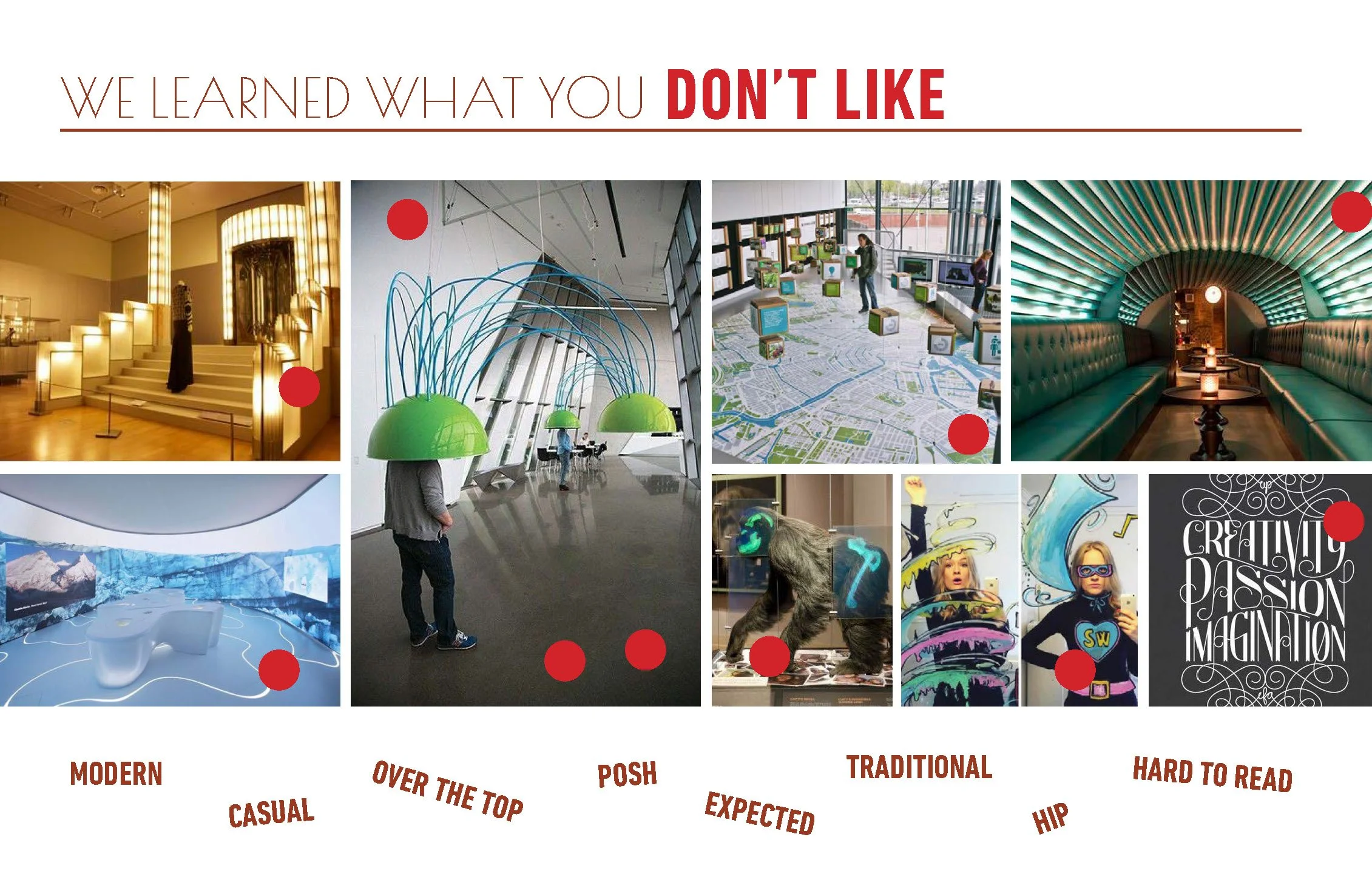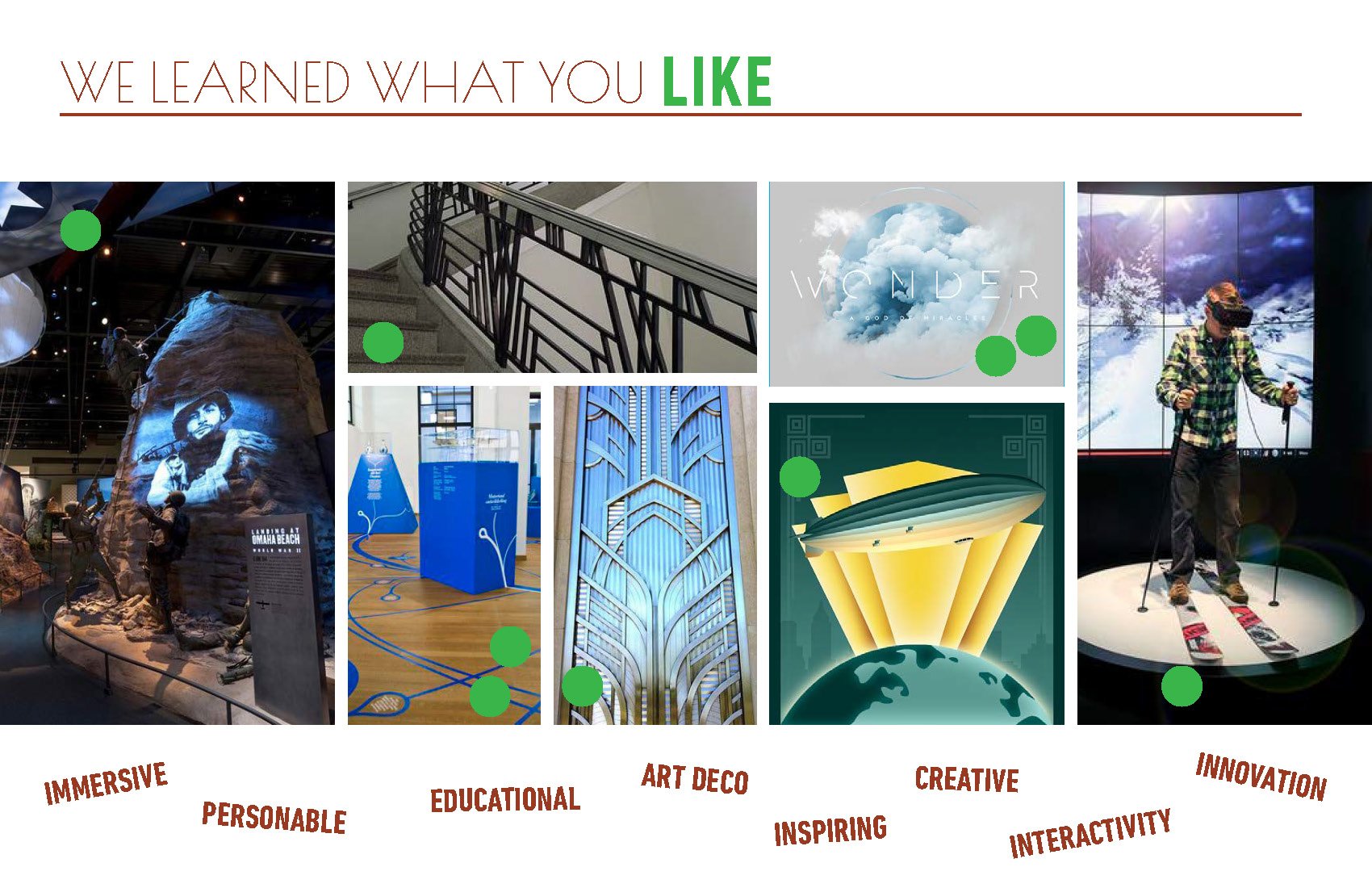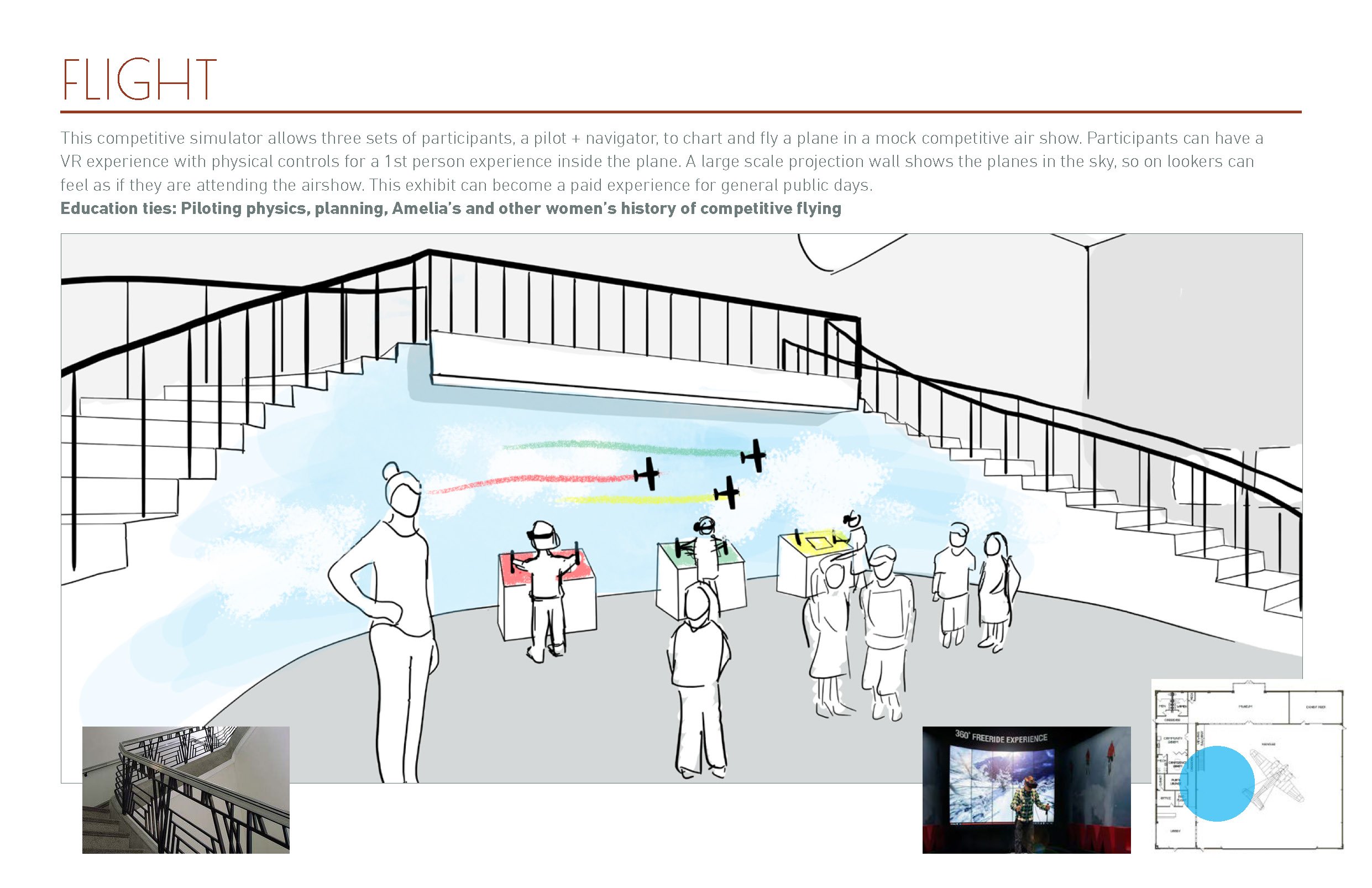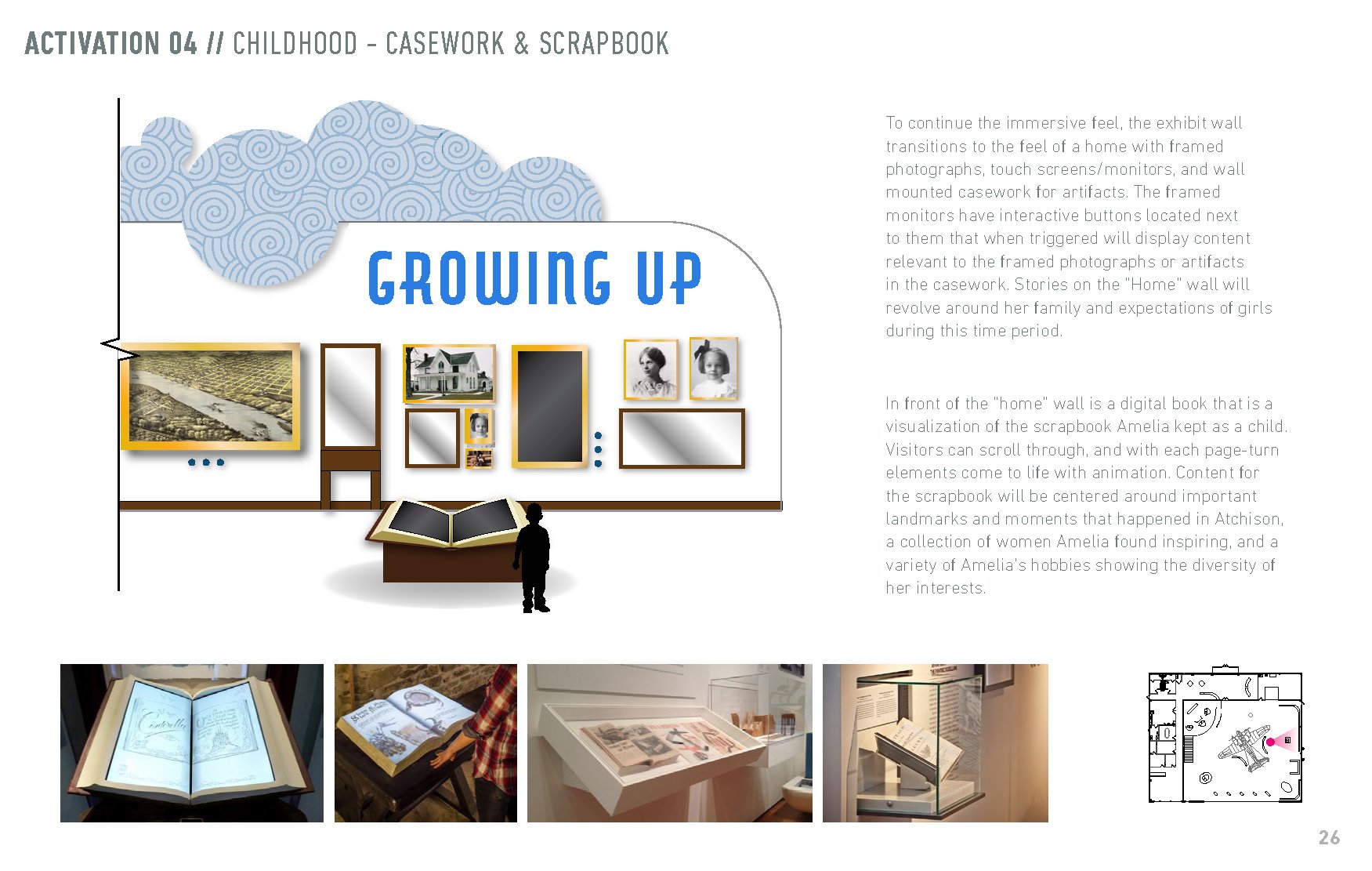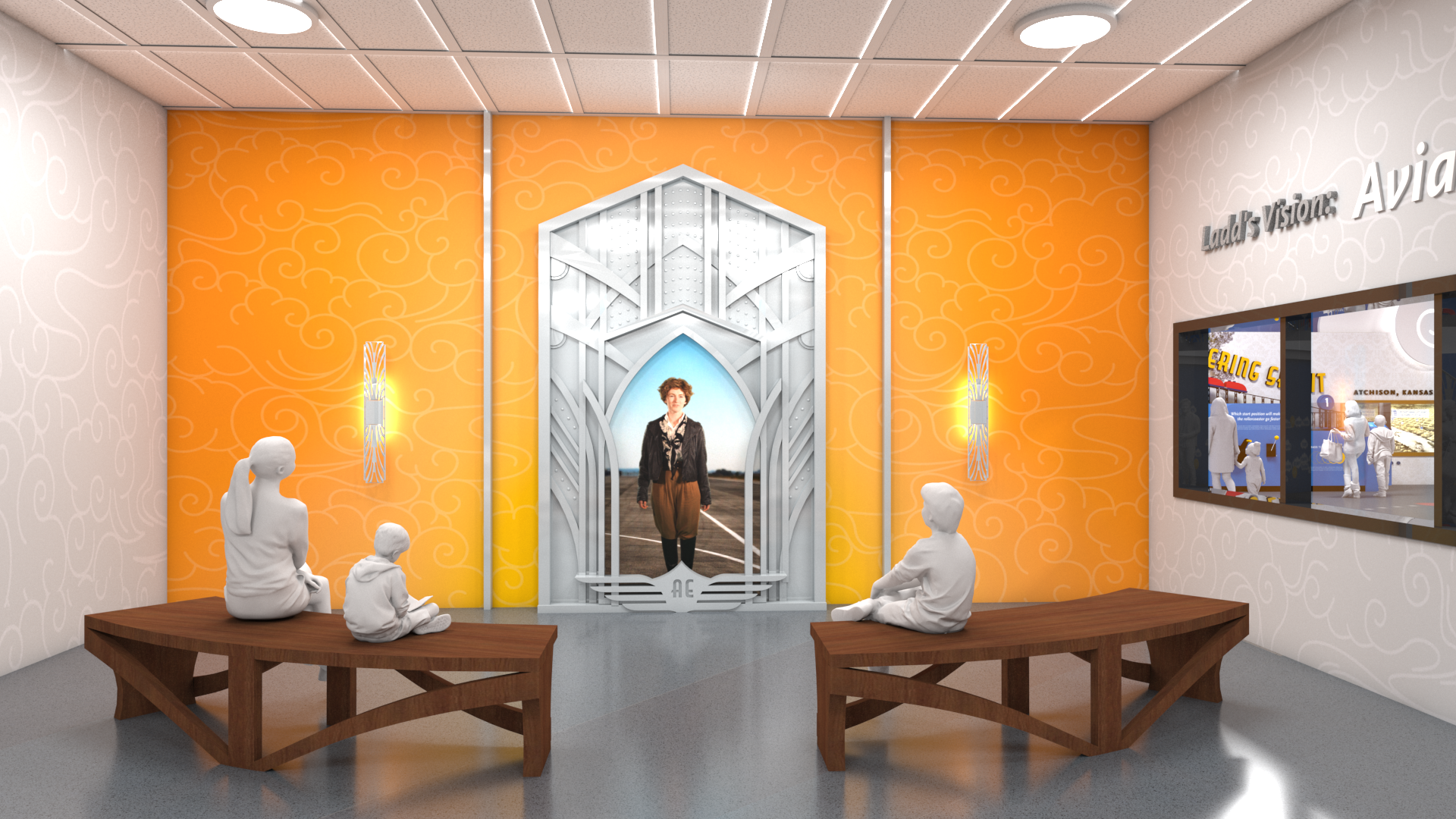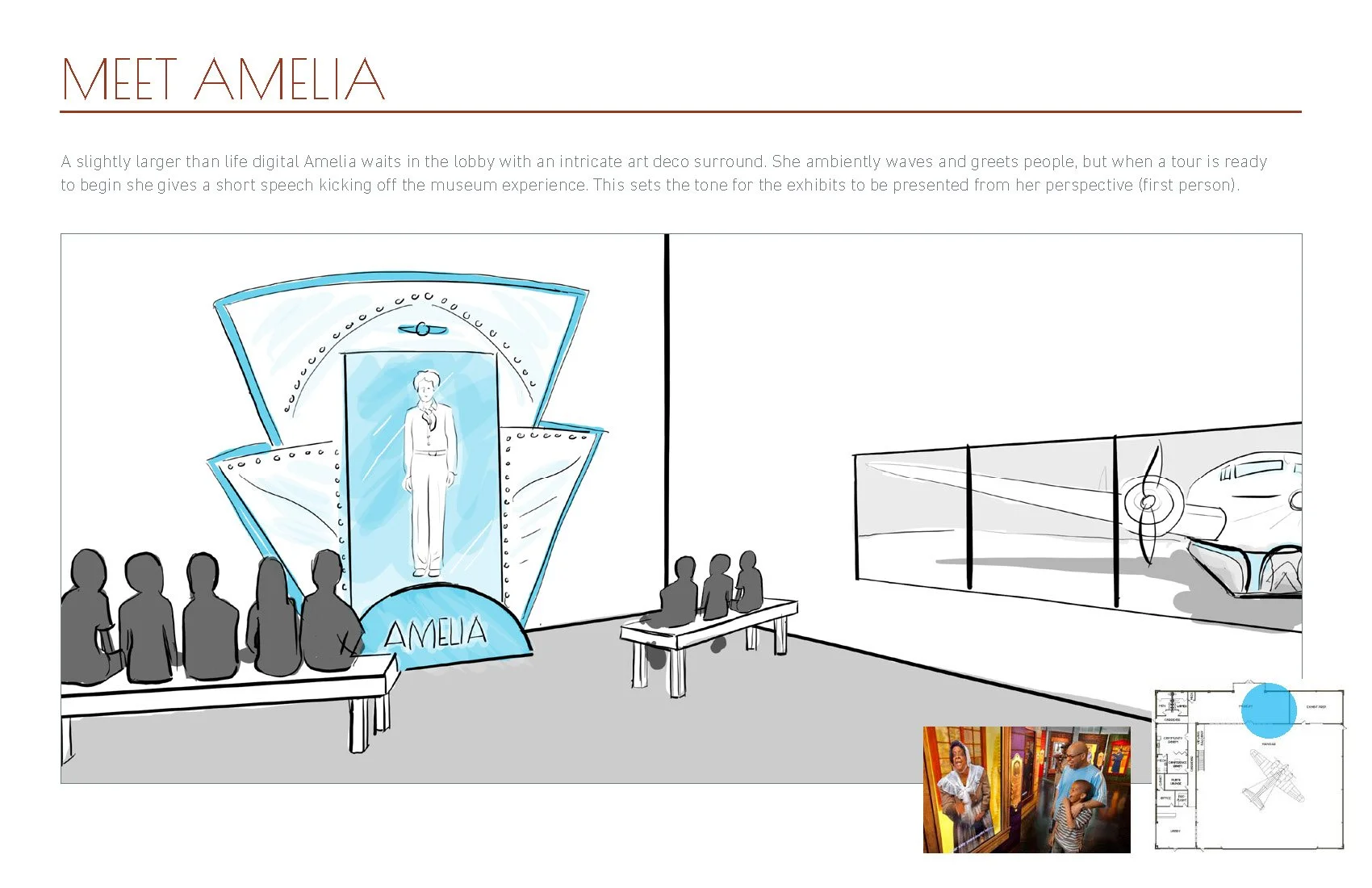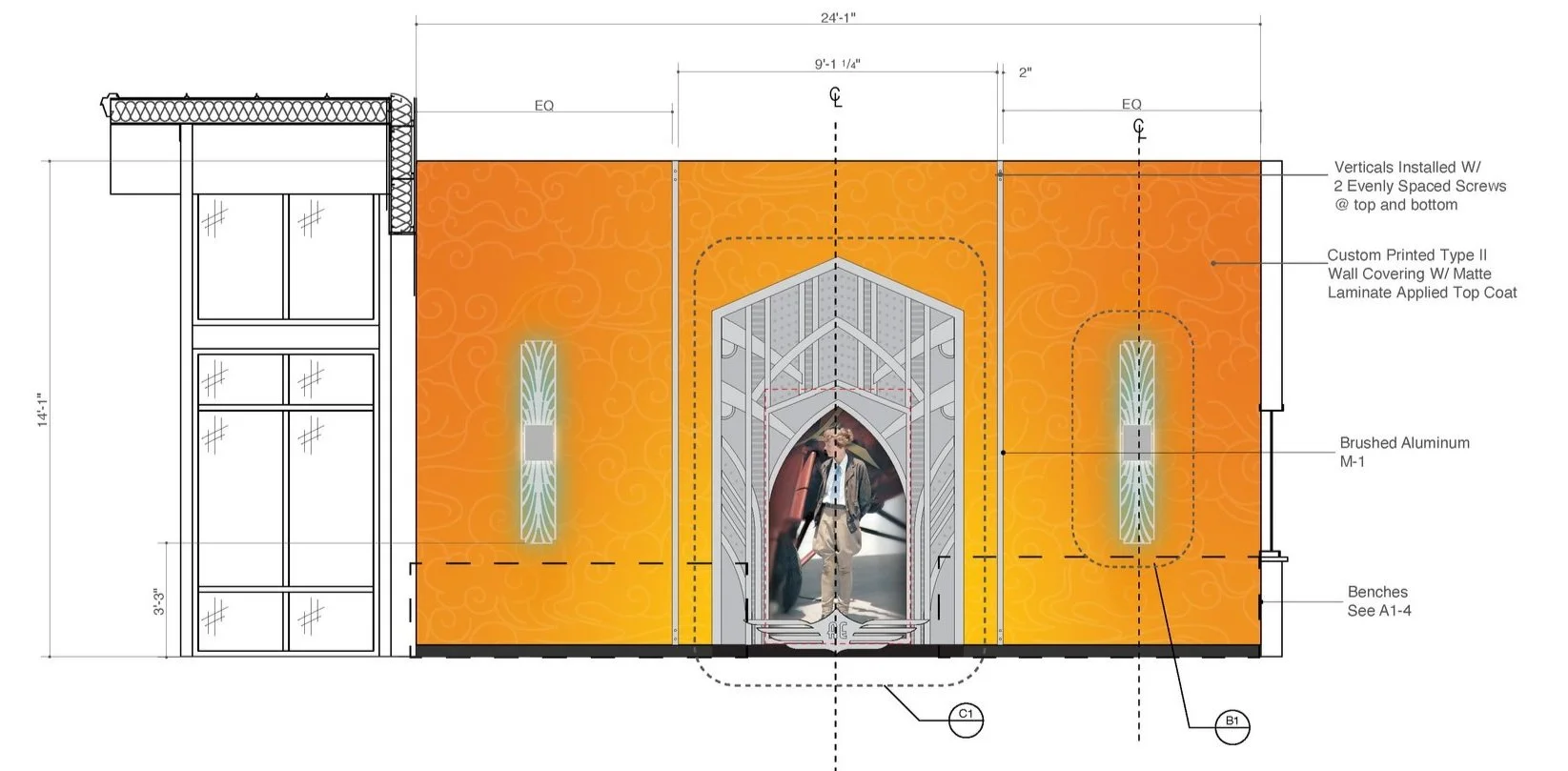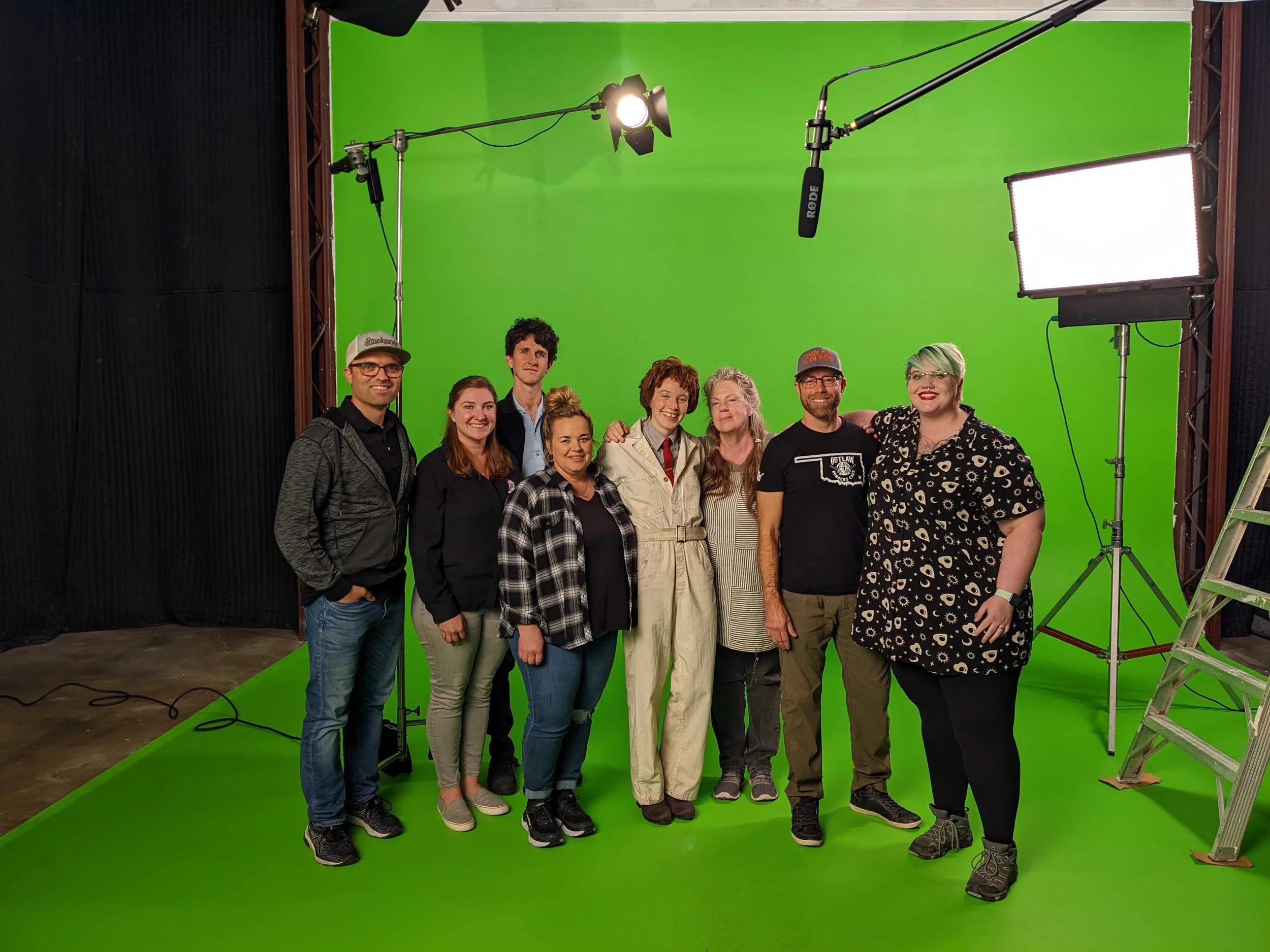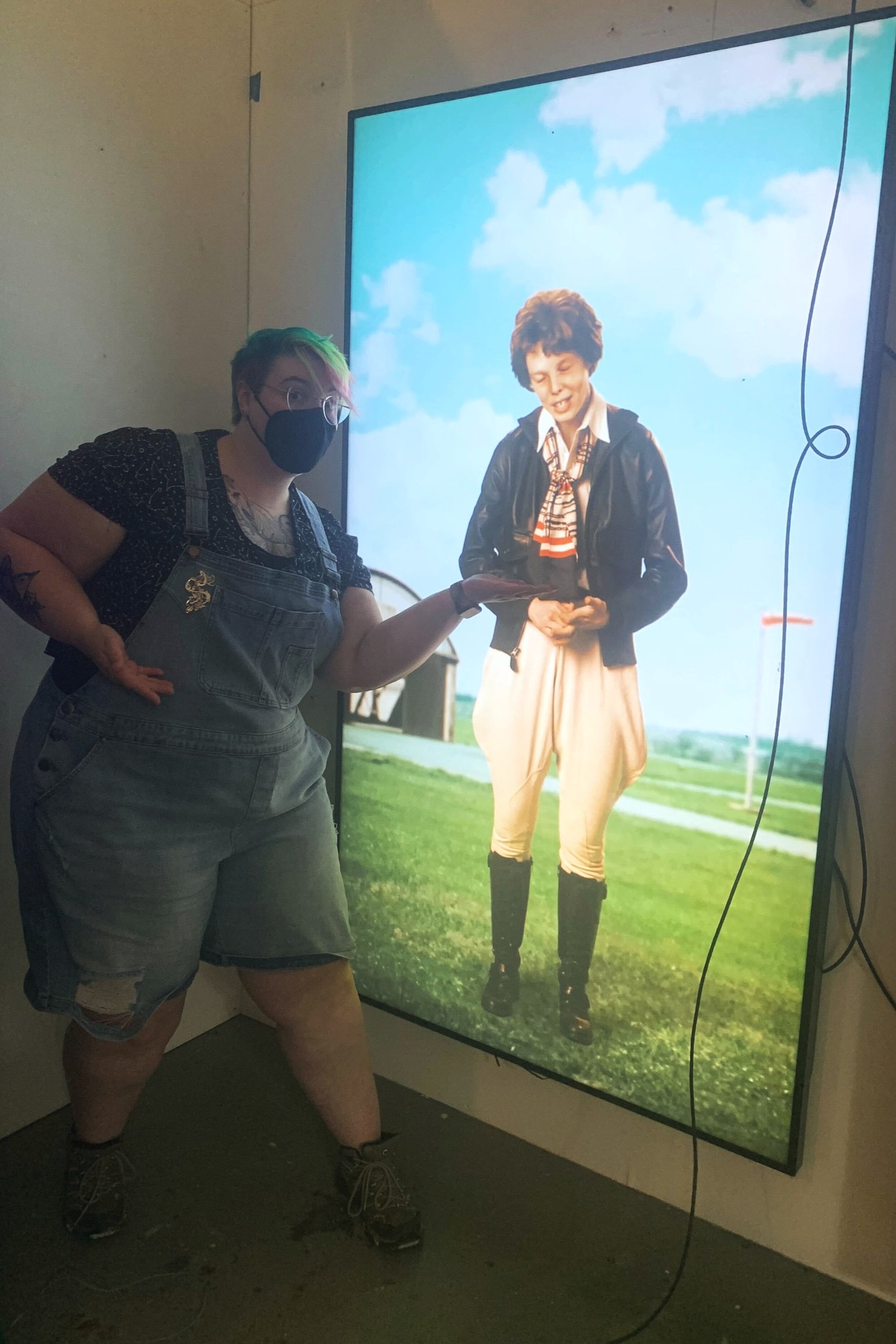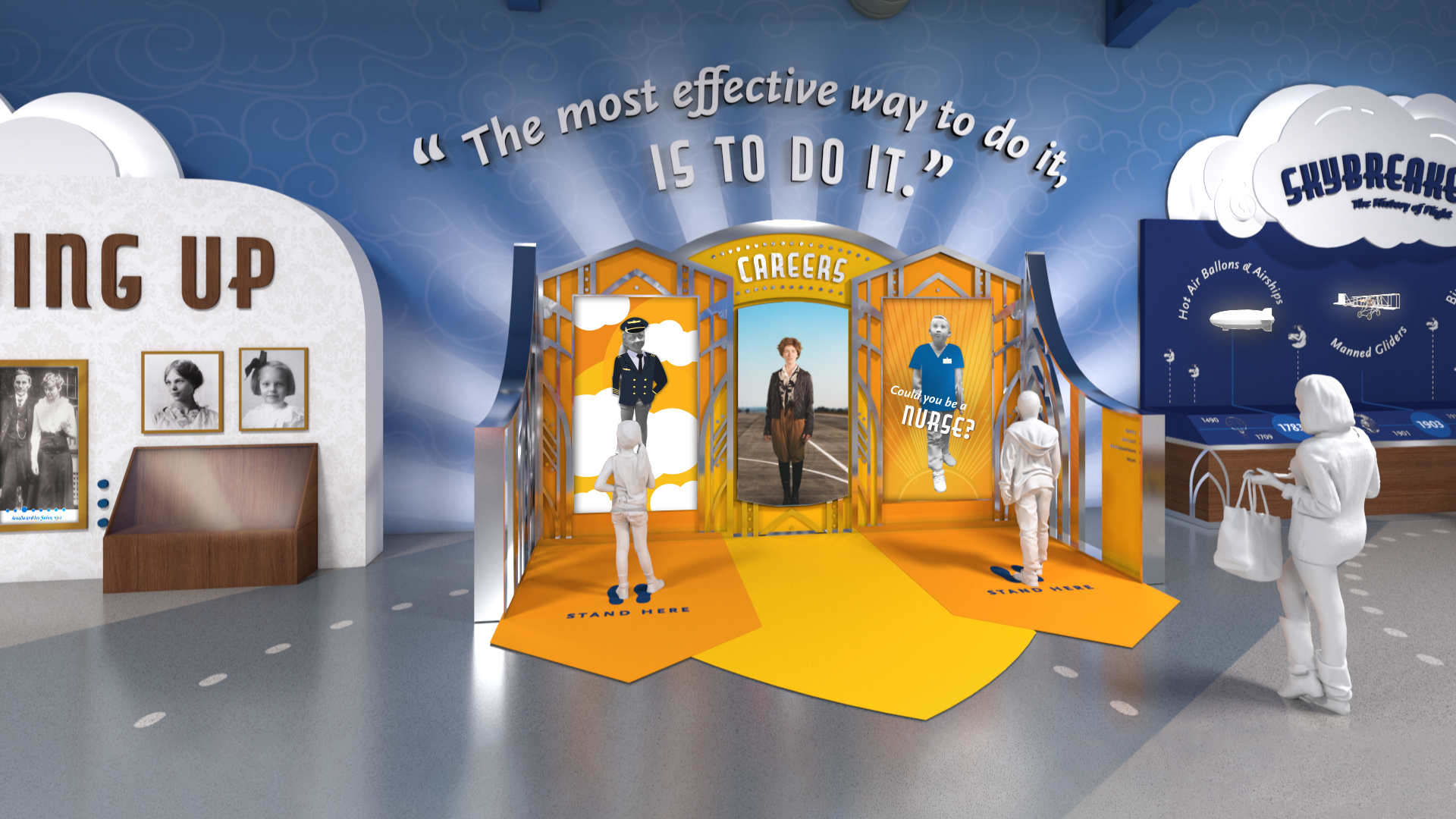
Amelia Earhart Hangar Museum: Creating an engaging learning experience
CREATIVE BRIEF
Role: Associate Creative Director — I’d like to highlight that the creative director was new to Dimensional Innovations when this project began, so I was placed on the project to help guide and teach the DI process. Two other designers intermittently supported us with industrial design and illustration needs, three 3D specialists worked on modeling, and four motion graphic designers worked on video production. The bulk of the design work, especially UI/UX, was designed by me.
Audience: Targeting 4th graders for regional field trips, and to encourage tourists of all ages to visit Atchison, Kansas
Needs: Following STEM education standards while also following Kansas and Missouri 4th Grade teaching requirements
From the Amelia Earhart Foundation: This team came to Dimensional Innovations with an open-ended brief. They had acquired Muriel, a fully refurbished Lockheed Electra 10-E airplane (the one Amelia disappeared in), and they planned to build a hangar to exclusive house her and have supporting museum exhibits around the perimeter of the hangar.
Discovery
We learned from the foundation team that this museum wasn’t just about history. This was about inspiring and empowering visitors. They should leaving feeling like they can do anything they set their minds to.
I fondly remember the first meeting, a discovery session, for this project. Everyone had so much energy to take on this project. We were immediately aligned that this museum must be innovative, interactive, engaging, and inclusive. We set out to design a museum experience like no other, specifically tailored to encourage learning for 4th-grade field trips.
We established a concrete direction by utilizing a dot poll exercise with the client team. I prepared a series of inspirational images and filled a room with prints of them. We then spent the whole day discussing and narrowing down what the client liked and disliked.
I had done some research prior to this session for background on Amelia, but we dove into her stories more in-depth and discussed which ones were important to feature and which were supplemental.
It was then time to get insight from our target audiences to hear what they would want to see and interact with at a museum about Amelia.
Designed to prioritize education
Before fully diving into conceptual design, we also proceeded with focus group interviews and worked with two specialized teams to develop content that met KS and MO state educational standards and typical museum content practices.
Immediately after discovery, we conducted focus group interviews with several 4th and 8th-grade classes in both Kansas and Missouri.
These focus groups gave us invaluable information to make sure we designed for what students would want to engage with. We learned that they were very curious about Amelia’s own childhood, which lead us to make that part of the museum a larger footprint. We also got confirmation on several ideas we already had. Like dressing up as Amelia, having floor graphics that made it more fun to follow the museum path, and including technology like virtual reality.
After our focus groups, our educational team created a set of parameters for us to include in our design, specifically tied to state STEM educational standards.
We paired these standards with specific activations throughout the museum and presented them with the final conceptual design package, as seen in the image above.
CONCEPTUAL DESIGN
Bringing discovery, focus group learning, educational standards and story telling together.
After all interview and educational reference materials were gathered, we created a concise written document to outline all of our design parameters as place of reference. This was also presented to the client in our final presentation, and used by them for fundraising material. This is outlined in the “Messaging, Themes, and Stories” section to the right (or below on mobile).
After having this creative brief, we dove into a floor plan and visitor path. It was important to block out the storytelling in larger pieces to ensure visitors saw and understood a clear narrative and experience throughout the museum. One big limitation we had to work within was that this flow was primarily going to be a circular pattern, due to Muriel being located at the center of the hangar. We ended up going with a primarily chronological approach as that seemed the clearest, and it would hook our target audience with their interest in her childhood.
Next was sketching! At this point, I facilitated a charette with a bigger internal team to dream up big ideas. These sketches were presented to the client as an early progress check-in, we received feedback and adjusted them, as well as began planning their locations in the museum.
This is an early conceptual sketch I drew, ultimately this specific activation didn’t make the final cut, but several of its core concepts like virtual reality and competitive gamification did.
Another consideration while creating the activation layout was the engagement and emotional journey for visitors. We wanted to ease them into engagement, so that by the time they reached more intensive activations, visitors were familiar/comfortable with the interactive systems we had in place. We also wanted to have areas of rest, for both sound mitigation reasons, and to prevent visitor fatigue. I also knew that, from a psychological perspective, we needed to end on a memorable, positive emotional moment, so visitors leave feeling the impact of Amelia and inspire them to do the same when leaving. This lead us to make an atypical choice for a museum, placing a theatrical video and VR experience at the end of the museum, rather than the start.
As pictured above, rough conceptual elevations began as activation concepts and locations were selected and solidified. These would be used by our 3D team to create models for a flythrough video for the museum to fundraise with, embedded below.
Note: You’ll see a lot of my writing on these presentation pages. Being able to clearly communicate concepts is something I strive to do, as it is important for clients to have clear references after presentations so they have the tools to send constructive feedback, and present to donors in this case.
Messaging, Themes, and Stories
1. EDUCATION Since the vast majority of visitors will be students, opportunities for educational presentations and experiences associated with Amelia will be fully explored. STEAM connections abound in this environment, and will be maximized to ensure AEHM checks all the key boxes for educators seeking a top-notch field trip destination.
2. INSPIRATION A central and recurring theme of the exhibit, the message of inspiration will be reinforced wherever it is appropriate and organic, whether in presentations specific to Amelia’s life and work, as well as other exhibit topics.
3. AMELIA’S LIFE & WORK Though obvious as this is a museum focused on an individual, here we will stress presentations that do not duplicate materials in the Birthplace Museum, instead finding unexpected themes, artifacts, and nuggets of information that best serve the AEHM mission.
4. AMELIA’S VOICE Stories are best told and received when they come from the horse’s mouth, so to speak. Having Amelia as the voice of the visitor experience will help bring her story to life for today’s visitors, and give the exhibit a consistent, flexible lens through which to present material in whatever format works best.
5. AVIATION HISTORY The history of flight is one of our nation’s most compelling stories, and Amelia is front and center in its golden age. Her place in the pantheon of great American aviators will be fully explored.
6. AVIATION MECHANICS Given that one of AEHM’s missions is to inspire the next generation of aviation professionals, the experience will give students a chance to learn, through hands-on exhibits, how airplanes work and how they can make aviation their life’s work.
7. CURIOSITY One of the most vivid threads throughout Amelia’s life was her insatiable curiosity and desire to learn. The experience will be designed to spark a similar curiosity in visitors, who will be encouraged to emulate Amelia’s thirst for knowledge and understanding.
8. ADVENTURE Amelia’s pioneering spirit and sense of adventure will be highlighted throughout the exhibit, sending visitors home to consider how they can incorporate that same sense of adventure in their own lives, studies and work.
9. FAILURE & SUCCESS Amelia’s steadfast focus on achieving her goals, and her willingness to face her challenges without fear of failure, is an important message to AEHM visitors. Young people need to understand that failure is often a critical step on the path to success, and presentations will reinforce this belief wherever possible.
10. MURIEL Muriel is the visual centerpiece of the museum, and its allure can be used to showcase material that is deemed critical to AEHM’s mission and goals. Whatever presentations surround Muriel will be among the most viewed in the museum, and should include the story of Grace and her restoration of the airplane.
11. BREAKING BARRIERS: Amelia was one of America’s first and most celebrated gender pioneers, achieving incredible success in a field dominated by men. She took her role as a role model seriously and worked to advance the cause of women at a time when that was as much art as science. By exploring Amelia’s unwillingness to allow gender to hamstring her dreams, visitors will feel empowered to follow her stellar example.
12. MYSTERY: While the mystery surrounding Amelia’s disappearance will be a secondary message in the exhibit, it can provide a fun way for visitors to get involved—learning about the various theories and then either pick the one they think is most likely or offering new theories of their own
Final conceptual deliverable
A flythrough rendering of the space was created to help the foundation with fundraising efforts before we finished the project.
The details and styling is this isn’t perfect as this was the result of a three-month design sprint to take sketched concepts into a 3D rendered environment. So we leaned into a custom-composed audio track for an emotional presentation that the Amelia Earhart Foundation used to fundraise with.

Activation development
The museum is currently in the production and installation phase, so I don’t have any complete photos or metrics yet, but the final design, development, and engineering coordination phases have been an intensive 3-year process. This section will break down specific activations throughout those phases in more detail.
Meet Amelia
The first activation in the museum, located in the lobby. This should hook the audience, and set the stage for the rest of the experience.
Original conceptual sketch drawn by me.
After the concept was approved, more detailed spacial drawings were created. These were then passed off to an engineering team for fabrication.
After the spatial details were figured out, content creation began.
We wanted to attempt a deep fake of Amelia Earhart. We knew this would be a challenge due to limited video footage of her, especially considering it is in black and white.
We had concerns the deep fake process could end up in the uncanny valley, so we ended up doing a national casting call for an actress. We found a perfect option and styled her as closely to Amelia as possible. In this case, we knew we could just use footage of our actress if the deep fake didn’t work out.
One of Dimensional Innovations’ very talented animation experts, Dexter Brewer took on the project, and with some layered effects managed to make the deep fake experience convincing enough that we moved forward!
Crew shot from our deep fake shoot day!
We are currently in the testing phase of the project, Full-scale testing is an essential part of my process — as we can see me “Vanna White-ing” in the adjacent photo.
This was a prime example of catching issues early as Amelia is intended to be life-size for this activation, but she is clearly slightly too small.
This issue has since been corrected, and implementation should go smoothly without changes on-site.
Stay Tuned!
I will be finishing this case study after project completion - check back for updates in a few months.
Made by Women
The leadership from both AEHM and Dimensional Innovations project team were primarily women. From directors, managers, creative talent, and development.
It has been very inspiring to follow in Amelia’s footsteps, continuing to challenge gender norms when creating this museum, and hopefully, inspiring future generations of women.
“Amelia’s influence on aviation and female pilots is immeasurable, which is why it’s our vision to celebrate every aspect of her life.”
— Karen Seaberg, founder and president, Amelia Earhart Hangar Museum

